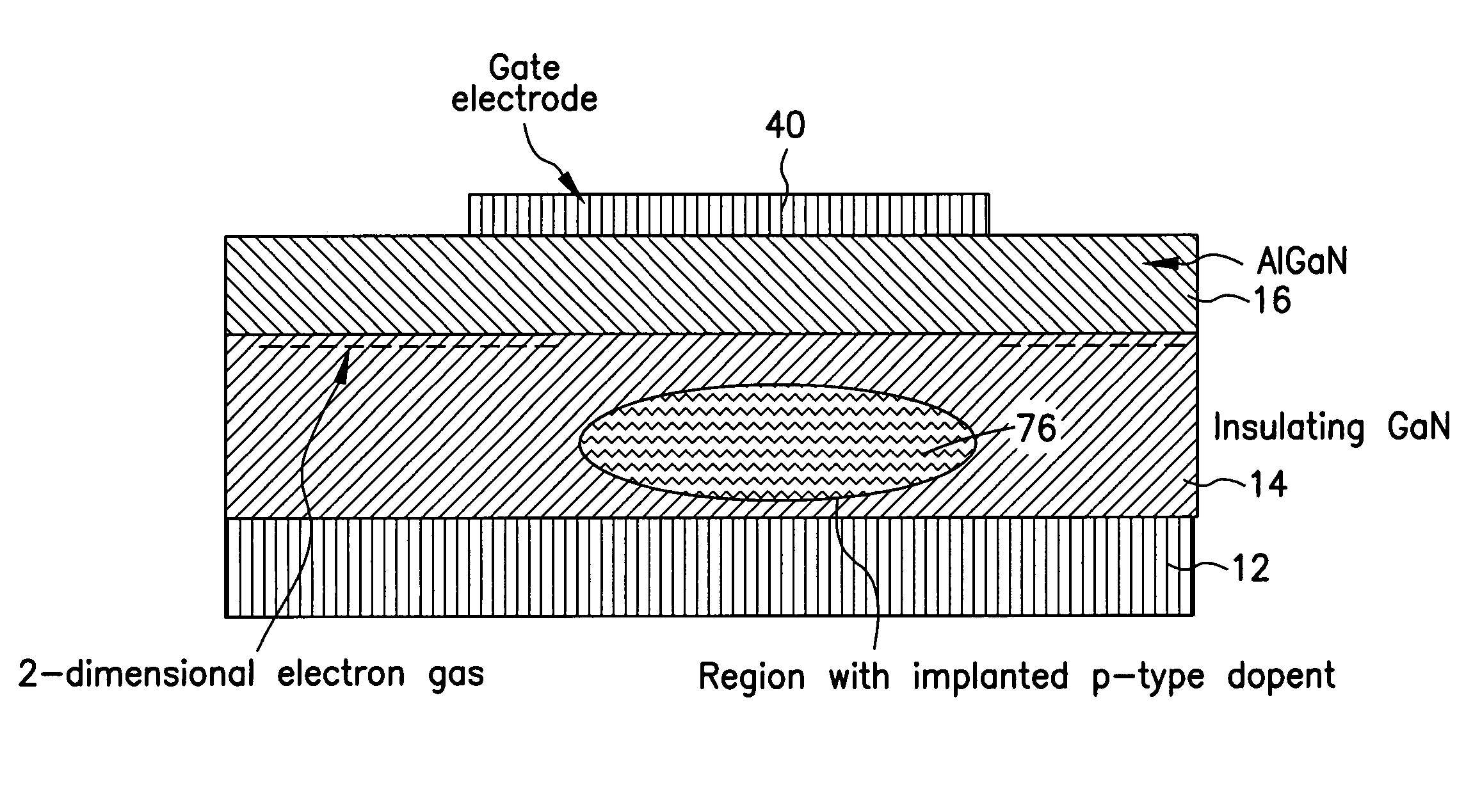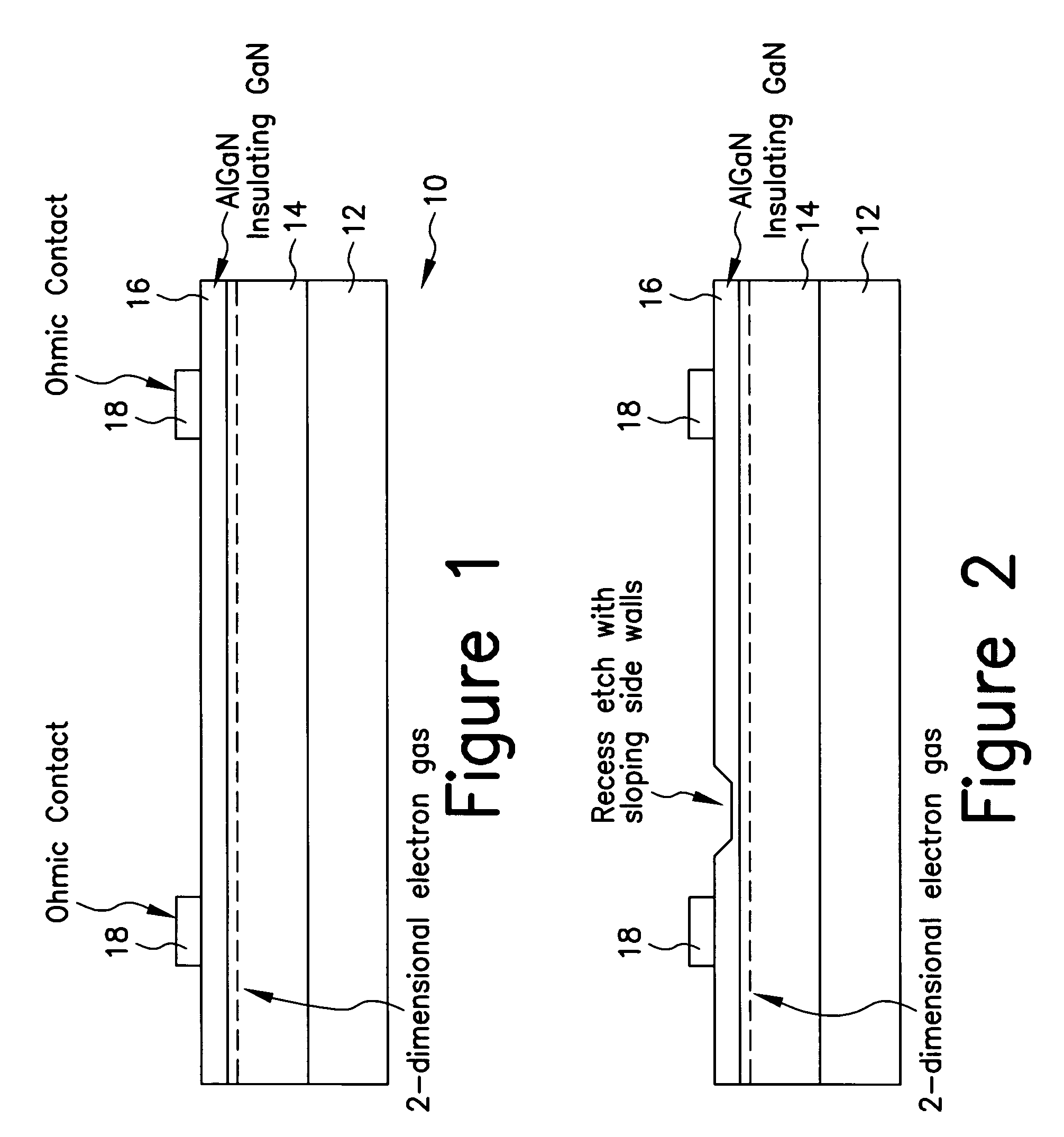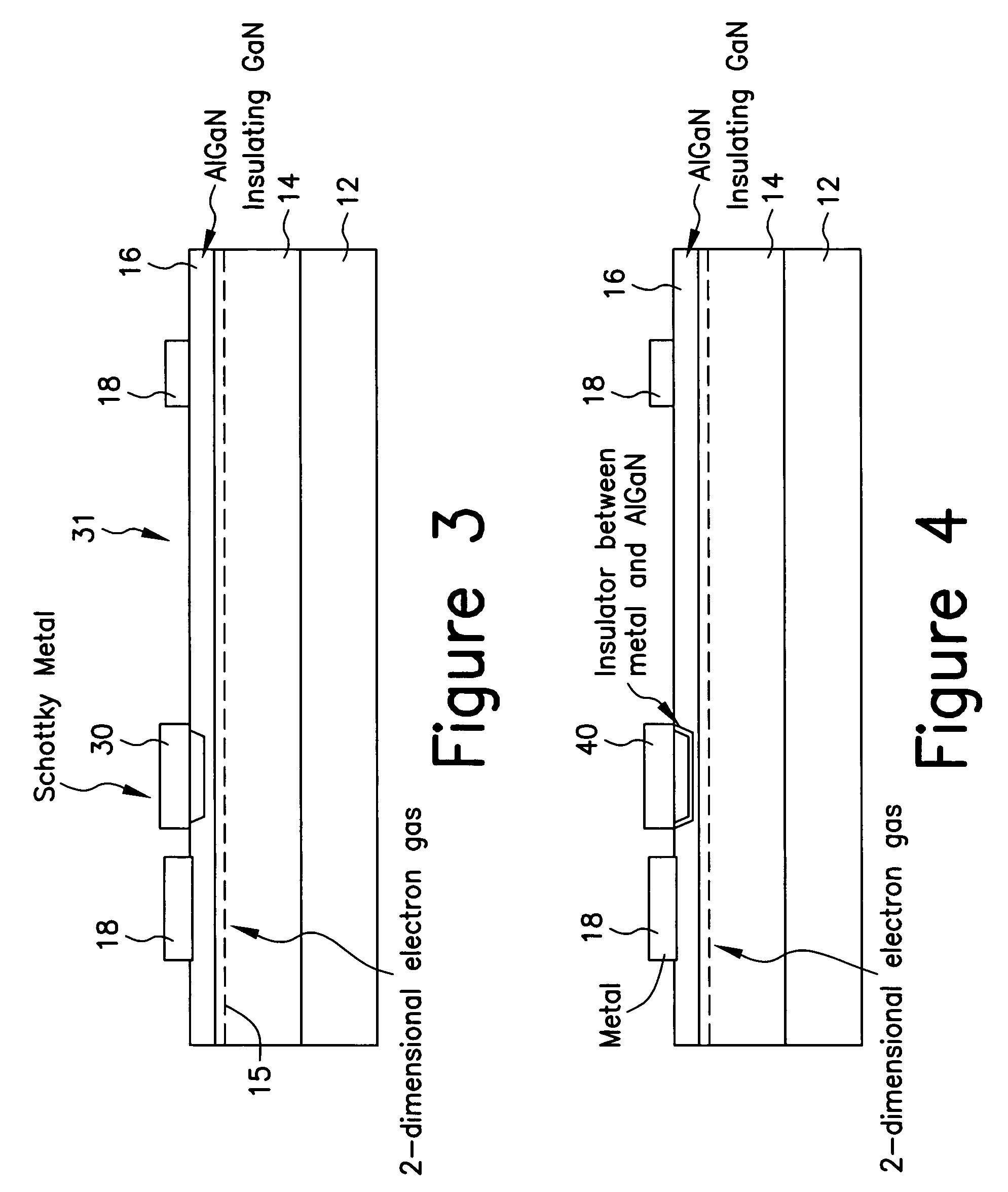Enhancement mode III-nitride FET
a technology of nitride and enhanced mode, which is applied in the direction of semiconductor/solid-state device manufacturing, semiconductor devices, electrical apparatus, etc., can solve the problems of limited applicability to power management, limited thickness of strained algan/gan system, and limited thickness of low resistive loss and high current densities. , to achieve the effect of low leakage, low resistance and high breakdown field
- Summary
- Abstract
- Description
- Claims
- Application Information
AI Technical Summary
Benefits of technology
Problems solved by technology
Method used
Image
Examples
Embodiment Construction
[0039]In the construction of GaN material devices, a number of factors come into play to impact the functionality and capability of the devices. A large lattice mismatch in III-nitride materials and the strong piezoelectric and polarization effects in these materials significantly impact the electrical properties of III-nitride heterojunction devices. Nearly all reported GaN-based HEMTs to date use strained GaN—AlGaN junctions with alloy compositions that are designed to relieve the strain to avoid dislocations that may be responsible for long term instabilities in the devices. Various devices and systems for building heterojunction devices have been proposed to control the lattice mismatch and the strain of the GaN—AlGaN junctions. These devices are particularly designed to take advantage of piezoelectric and spontaneous polarization effects and to minimize long term instabilities.
[0040]GaN / AlGaN HEMT devices typically have three terminals including a gate, a drain and a source ter...
PUM
 Login to View More
Login to View More Abstract
Description
Claims
Application Information
 Login to View More
Login to View More - R&D
- Intellectual Property
- Life Sciences
- Materials
- Tech Scout
- Unparalleled Data Quality
- Higher Quality Content
- 60% Fewer Hallucinations
Browse by: Latest US Patents, China's latest patents, Technical Efficacy Thesaurus, Application Domain, Technology Topic, Popular Technical Reports.
© 2025 PatSnap. All rights reserved.Legal|Privacy policy|Modern Slavery Act Transparency Statement|Sitemap|About US| Contact US: help@patsnap.com



